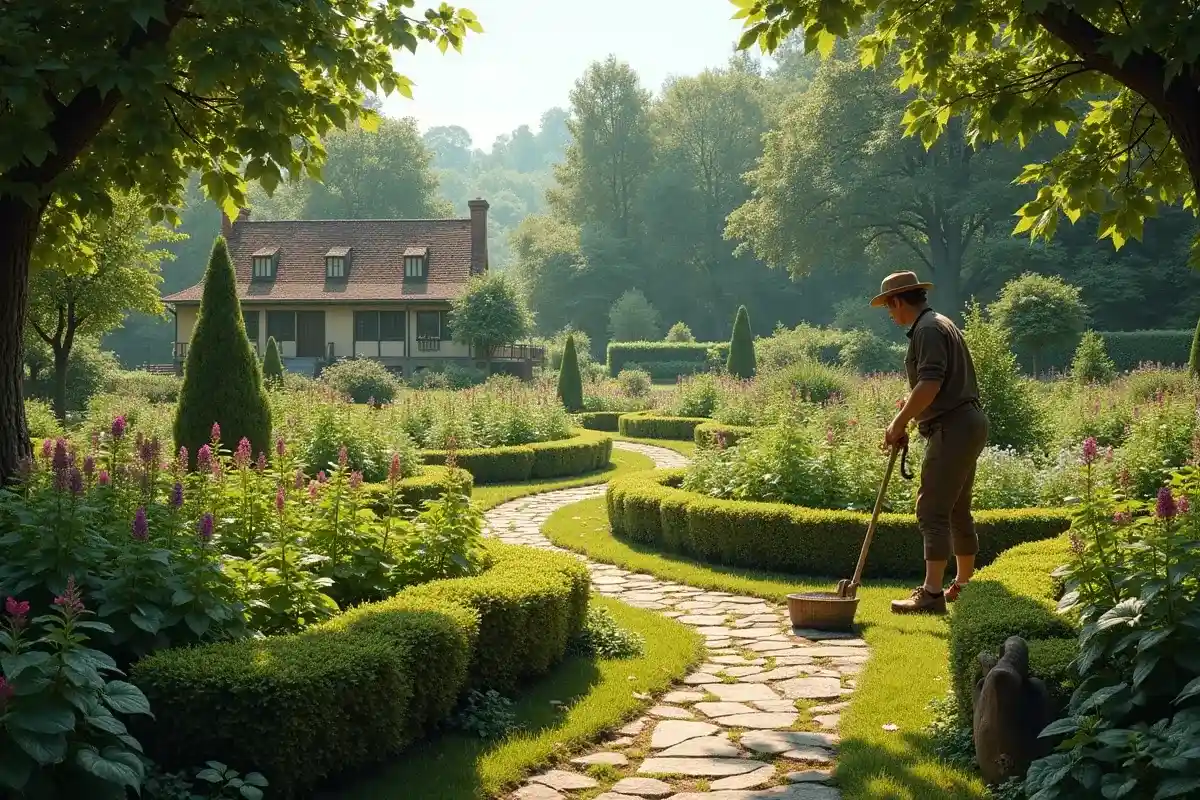
10 Tips For Looking After A Large Garden
Owning a large garden is a dream for many – it’s the space to create your own lush haven, grow a variety of plants, or even cultivate your own mini forest of native trees. But as lovely as it sounds, maintaining a large garden comes with its own set of unique challenges. If you’ve ever looked out over a wide expanse of greenery and thought, “Where do I even begin?” – you’re in the right place. Here are ten practical tips to help you manage and maintain your large garden without feeling overwhelmed.
1. Invest in a Watering System for Large Gardens
With a big garden, watering can be an enormous task. Rather than lugging a heavy hose or running around with watering cans, consider investing in one of the available watering systems for large gardens. Options range from simple drip irrigation setups to more advanced automated sprinkler systems, which allow you to water large areas efficiently.
You can even set these systems on timers to ensure your plants get consistent hydration without any extra effort. It’s worth spending on a good system because well-watered plants are healthier, grow faster, and require less attention overall.
2. Plan Your Garden Layout for Ease of Maintenance
It might sound obvious, but having a well-planned garden layout makes maintenance significantly easier. Think about where you want different types of plants: shrubs, flowers, vegetables, and trees. Group plants with similar watering and sunlight needs together; this zoning approach simplifies tasks like watering, fertilising, and weeding.
You might also want to consider pathways and access points, so you don’t end up trampling plants when you’re working around the garden. When each area has a clear purpose and is easy to access, the upkeep feels a lot more manageable.
3. Prioritise Soil Health
Healthy plants start with healthy soil. Regularly enriching your soil with organic compost, mulch, or manure will keep it nutrient-rich and fertile. For large gardens, composting on-site can be particularly useful.
You can use plant trimmings, leaves, and kitchen scraps to create nutrient-dense compost that feeds your plants without needing to buy fertilisers constantly. Mulching is also essential in larger gardens; it helps retain moisture, suppresses weeds, and adds nutrients back to the soil. Look after your soil, and it’ll look after your plants.
4. Use Mulching to Cut Down on Weeds
One thing that can quickly turn a large garden into an unmanageable jungle is weeds. Weeds can sneak up in between plants, crowd out your flowers, and compete for water and nutrients. A thick layer of mulch will reduce the amount of weeding you need to do by blocking sunlight from reaching weed seeds.
Wood chips, straw, or bark all work well and decompose slowly, helping your plants grow while keeping weeds in check. It’s one of the easiest ways to save yourself hours of work down the line.
5. Choose Low-Maintenance Plants and Shrubs
When working with a large area, not every plant has to be a high-maintenance beauty queen. Opt for hardy, low-maintenance plants that thrive in your climate and require minimal care. Native plants are often the best option because they’re adapted to local conditions and don’t need constant watering or pest control.
Ornamental grasses, evergreens, and ground cover plants can also add beauty to your garden while cutting down on maintenance time. Select wisely, and your garden will look stunning without needing hours of attention every week.
6. Break Up Tasks into Manageable Chunks
Garden upkeep can feel daunting when you try to tackle it all at once. Instead, break tasks into small chunks and spread them out over the week. For example, dedicate one day to weeding, another for pruning, and so on.
Setting up a simple schedule helps you stay on top of things without feeling like you have to spend entire days in the garden. A well-managed routine keeps the garden looking its best and helps you enjoy the process rather than dreading it.
7. Use Raised Beds for Vegetables and Herbs
If you want to grow vegetables or herbs, raised beds are a fantastic choice for large gardens. They allow you to control the soil quality, make it easier to weed, and keep pests at bay. Raised beds also mean less bending and stretching, making planting and harvesting less strenuous.
Plus, they’re great for separating areas and adding structure to your garden layout. With a few well-placed raised beds, you can have a productive vegetable garden that’s straightforward to maintain.
8. Keep Your Tools Organised and Well-Maintained
Gardening in a large space is much more manageable when you have the right tools – and when you know where to find them. Keep all your garden tools in a centralised location, ideally in a shed or storage box. Ensure your tools are sharp and well-maintained to make your job easier.
Blunt tools require more effort and are less effective. Regularly cleaning and sharpening tools will also extend their lifespan, saving you from having to replace them frequently.
9. Take Advantage of Perennials
Unlike annual plants, perennials don’t need to be replanted every year, making them an excellent choice for large gardens. Once established, they come back year after year, creating beautiful displays with less effort on your part.
Perennials come in a wide range of colours, shapes, and sizes, so you can find options that suit your style while being more sustainable and economical in the long run. From colourful flowers to sturdy shrubs, they’re a low-hassle way to keep your garden vibrant.
10. Use Companion Planting for Healthier Plants
If you’re looking for a way to reduce the need for pesticides and encourage plant health, companion planting can be a great addition to your gardening strategy. Some plants, like marigolds, naturally deter pests, while others can help enrich the soil or support the growth of nearby plants.
For instance, planting basil near tomatoes can enhance tomato growth and flavour, while nasturtiums can keep aphids away from your crops. Companion planting is a natural way to keep your plants healthy, productive, and pest-free.
Making Your Garden Work for You
Taking care of a large garden is no small task, but with the right approach, it doesn’t have to be overwhelming. By setting up a few key systems and choosing plants and practices that work with the space, you’ll find yourself spending more time enjoying the garden than toiling in it.
Think of your garden as a long-term project, one that grows and changes with time, and remember that every small effort adds up to a beautiful and thriving green space. After all, the best gardens are those that grow with you.

